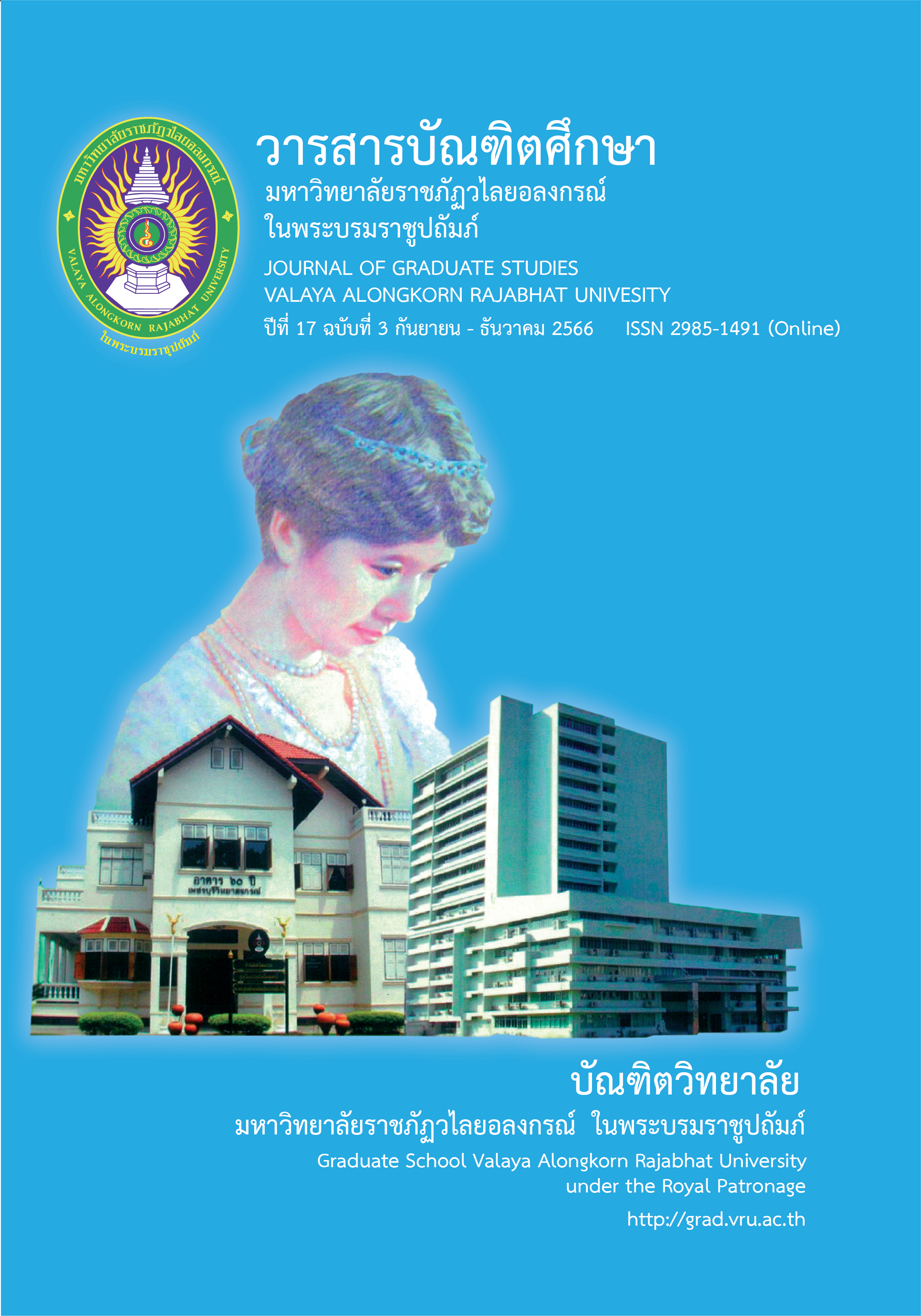THE DEVELOPMENT OF INNER STRENGTH SCALE FOR UNIVERSITY STUDENTS
Main Article Content
Abstract
This study aims to 1) translate and develop the Inner Strength Scale (ISS) questionnaire for Thai university students, 2) conduct a Confirmatory Factor Analysis (CFA), and 3) examine Naresuan University students’ inner strength. After translating and adjusting the instrument, the ISS questionnaire, 973 students from Naresuan University participated in the test using the voluntary sampling method. The statistical analysis used in this study included frequency, percentage, means, standard deviation, pearson’s product correlation coefficient and second order confirmatory factor analysis.
This study aims to 1) translate and develop the Inner Strength Scale (ISS) questionnaire for Thai university students, 2) conduct a Confirmatory Factor Analysis (CFA), and 3) examine Naresuan University students’ inner strength. After translating and adjusting the instrument, the ISS questionnaire, 973 students from Naresuan University participated in the test using the voluntary sampling method. The statistical analysis used in this study included frequency, percentage, means, standard deviation, pearson’s product correlation coefficient and second order confirmatory factor analysis.
The research results were as follows 1) The corrected item-total correlation of the questionnaire was all range between 0.401 – 0.692, while Cronbach’s alpha coefficient was 0.926. 2) The CFA indicates that the inner strength questionnaire has an acceptable fit with the structural model (2= 900.33, df = 166, GFI = 0.92, CFI = 0.98, RMSEA = 0.067). And 3) finally, the translated ISS questionnaire developed in this study can be used in Thai university students and an overall inner strength score of Naresuan university students exhibited a fairly high level (
= 4.35, SD= 0.731).
Article Details

This work is licensed under a Creative Commons Attribution-NonCommercial-NoDerivatives 4.0 International License.
บทความทุกเรื่องได้รับการตรวจความถูกต้องทางวิชาการโดยผู้ทรงคุณวุฒิ ทรรศนะและข้อคิดเห็นในบทความ Journal of Global of Perspectives in Humanities and Social Sciences (J-GPHSS) มิใช่เป็นทรรศนะและความคิดของผู้จัดทำจึงมิใช่ความรับผิดชอบของบัณฑิตวิทยาลัย มหาวิทยาลัยราชภัฏวไลยอลงกรณ์ ในพระบรมราชูปถัมภ์ กองบรรณาธิการไม่สงวนสิทธิ์การคัดลอก แต่ให้อ้างอิงแหล่งที่มา
References
Academic Affairs Division, Naresuan University. (2022). rāingān pračham pī kō̜ng bō̜rikān kānsưksā mahāwitthayālai Narēsūan pīngoppramān sō̜ngphanhārō̜ihoksipsī [Annual Report 2021]. Retrieved from http://www.edu.nu.ac.th/th/department/dep-academic/characteristics.html
Best, J. R. & Miller, P. H. (2010). A developmental perspective on executive functions. Child Development. 81(6), 1641-1660.
Boman, E., Gustafson, Y., Häggblom, A., Santamäki Fischer, R. & Nygren, B. (2014). Inner strength – associated with reduced prevalence of depression among older women. Aging & Mental Health. 19(12), 1078–1083. https://doi.org/10.1080/13607863.2014.977775
Dingley, C. E., Roux, G., & Bush, H. A. (2000). Inner strength: A concept analysis.
The Journal of Theory Construction & Testing. 4(2), 30-35.
Hair, J. F., Black, W. C., Babin, B. J. & Anderson, R. E. (2010). Multivariate data analysis. (7thed.). Upper Saddle River, N.J.: Pearson/Prentice Hall.
Knapp, J. R. & Karabenick, S. A. (1985). Overcoming problems: The perceived importance of will power and other contributors. Cognitive Theory and Research. 9(3), 343-354.
Lewis, K. L., & Roux, G. (2011). Psychometric testing of the inner strength questionnaire: Woman living with chronic health conditions. Applied Nursing Research. 24(3), 153-160.
Li, Y., et al. (2021). Mental health among college students during the covid-19 pandemic in China: A 2-wave longitudinal survey. Journal of Affective Disorders. 281, 597–604. https://doi.org/10.1016/j.jad.2020.11.109
Lundman, B., et al. (2010). Inner strength--A theoretical analysis of salutogenic concepts. International Journal of Nursing Studies. 47(2), 251-260.
Lundman, B., et al. (2011). Development and psychometric properties of the inner strength scale. International Journal of Nursing Studies. 48(10), 1266-1274. https://doi.org/10.1016/j.ijnurstu.2011.03.006
Moe, A., Hellzen, O., Ekker, K. & Enmarker, I. (2013). Inner strength in relation to perceived physical and mental health among the oldest old people with chronic illness. Aging & Mental Health. 17(2), 189–196. https://doi.org/10.1080/13607863.2012.717257
Rose, J. F. (1990). Psychologic health of women: A phenomenologic study of women’s inner strength. Advances in Nursing Science. 12(2), 56-70.
Roux, G. M., Dingley, C. E. & Bush, H. A. (2002). Inner strength in women: Metasynthesis of qualitative findings in theory development. Journal of Theory Construction and Testing. 6(1), 87-92.
Ruenruay, P., Koolnaphadol, P., & Inang, P. (2020). kān phatthanā rūp bǣp kān sœ̄m sāng khwām khemkhæng phāinai čhai khō̜ng mǣlīang dīeo dōi chai thritsadī kān prưksā lao rư̄ang pen thān [The development of single mother inner strength’s enhancement models based on narrative counseling theory]. Journal of Graduate Studies Valaya Alongkorn Rajabhat University. 14(1), 102-120.
Savage, M. J., et al. (2020). Mental health and movement behaviour during the COVID-19 pandemic in UK university students: Prospective cohort study. Mental Health and Physical Activity. 19, 100357. https://doi.org/10.1016/j.mhpa.2020.100357
Ubolyaem, D. & Wacharasin, C. (2018). kānphatthanā bǣp wat khwāmkhēmkhæng phāinai tonʻēng khō̜ng phanrayā phū dūlǣ sāmī thī pūai pen mareng raya luklām [Development of inner strength scale for wife caregivers of patients with advanced cancer]. Veridian E-Journal, Science and Technology Silpakorn University. 5(2), 16-31.
Viglund, K., Jonsén, E., Strandberg, G., Lundman, B. & Nygren, B. (2013). Inner strength as a mediator of the relationship between disease and self-rated health among old people. Journal of Advanced Nursing. 70(1), 144–152. https://doi.org/10.1111/jan.12179


